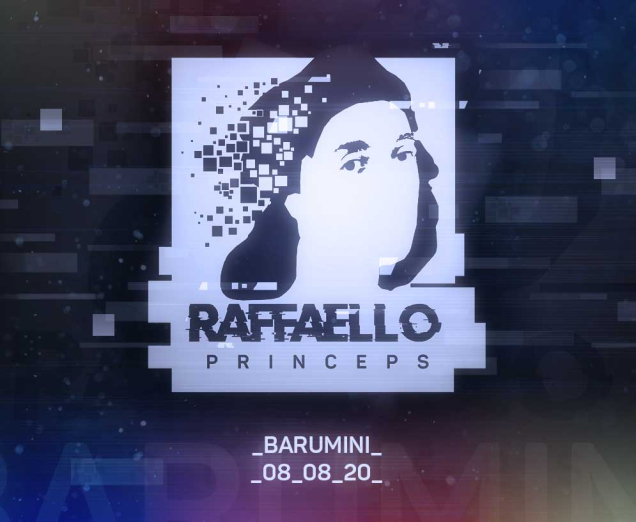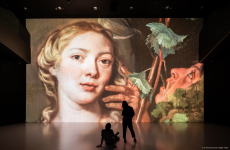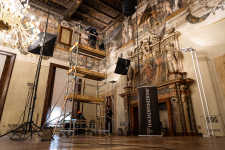There is a rich spectrum of cultural events throughout Italy celebrating the life and work of Raphael of Urbino, this year. In that context, in Sardinia, the Sistema Cultura Foundation and the Municipality of Barumini have organized a multimedia exhibition entitled “Raffaello Pinceps / Raphael, Prince among Painters. Images and Imagination of Raphael Sanzio", at the “G. Lilliu” Center. It offers a mixed itinerary involving new technology and methods for a deeper understanding of the life and works of Raphael.
The exhibition is made up of images, projections, visual cues and content, that create an immersive voyage into the imagination of Raphael, by drawing attention to certain essential details, which are hard to make out by the usual ways of exploration.
As the organizers’ lead partner on the exhibition, Haltadefinizione has provided 1:1 scale facsimiles of the Vision of Ezikiel, Saint Sebastian, the Fornarina and the Portrait of Agnolo Doni, and 4K ultra-high definition images for the multimedia installations of the Extasy of Saint Cecilia, the Portrait of Pope Leo X and the famous Marriage of the Virgin.
The Foundation chose to use ultra-high definition reproductions for this exhibition, because of their potential for teaching about great paintings. A multi-media exhibition must go beyond a framed canvas in order to put the details of the artist’s most amazing ideas on display.
One of Raphael’s most famous paintings, La Fornarina, is a fine example. The digital acqusition was performed using Haltadefinizione’s new proprietary technology. Luca Ponzio, founder of Haltadefinizione, explains: “The work of digital acquisition was done in January 2020 at the Barberini Corsini National Galleries in Rome, using our advanced photographic technology called Gigapixel+3D. This simultaneously performs two tasks: One is the capture of a complete digital image of the work at a very close range and very high resolution, much more than the naked eye can see, with true color, tone, detail and extraordinary image clarity. The other is the capture of 3D data about the shape of the object and its surface, that show us many physical details, like brush strokes and small cracks. These are useful to monitor the conservation status of the works, and also for their reproduction and public.
The President of the Foundation and the Mayor of Barumini have stated, “This collaboration between institutions, with the assistance of many others in the world of Raphael, has achieved significant results. This is especially true this year, with so many challenges facing us. We wanted to pay homage to Raphael, using new technology, to make an exhibition that is completely safe for our visitors, without sacrificing any of the emotional power that this genius of the Renaissance left for us in his works, where the artist’s eternal soul occupies time and space.”



